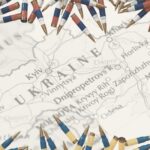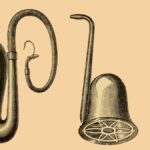The NROC
A highly valued intelligence asset of the CIA is “burned.”
Translated from Intelligence-speak, a human who has betrayed their country, either due to ideological differences or financial gain or revenge, has lost the anonymity which shielded them from the intelligence services of their home country. They can practically smell the blood and sweat of the torture chamber, or the gunsmoke of the firing squad infiltrating the air they breathe. They sense the chill of a Siberian winter in their bones, or the hangman’s noose around their neck.
Their government calls them traitors.
To the United States, they are heroes.
They can only hope their handler can get them out in time.
Over the last eighty years, the CIA has managed to exfiltrate, debrief, and resettle a classified number of foreign agents, enabled by the low-profile department within the CIA called the National Resettlement Operations Center (NROC). In 1947, at the founding of the CIA, Congress approved the agency to resettle up to one-hundred people per year who have provided significant contributions to our intelligence community. NROC officials have stated on record that they have yet to reach the minimum annual allotment, though they have occasionally come close.
Similar to the US Marshal’s Service Witness Protection Service, NROC provides financial assistance and housing for their clients. Unlike WitSec, the CIA also provides language lessons, culture assimilation training, and monitoring against their vengeful former government.
Defectors could be your next-door neighbor. They guy who cuts the meat at your local supermarket, or drives the truck that delivers your Amazon packages. They lead secretive and isolated lives, never seeing or speaking to their old friends or extended family, posting on social media, or venturing across the border of their former homeland.
Russian Memories are Long
A farmer coos to a brave rooster who has fled the barnyard to a neighbor’s open range. “Come on back to the harn,” says the farmer. “You can see all your old hens, hang around the fire, and party like it was 1995. There will be vodka! And music! And dancing!”
All the other animals in the free range across the fence from the farm tell him, “No, Brave Rooster, don’t do it. The farmer is lying! You will have your head chopped off and you will be made into chicken soup.”
But the Brave Rooster misses his old hens. And dancing. And vodka. Who could blame him? He is culturally lost in the free range, isolated from the other roosters and barely able to crow the same way they do. He is homesick for the sights, smells, and sounds of his old, familiar barn.
The Brave Rooster convinces himself the farmer is truly forgiving and welcoming, ready to let bygones be bygones. He crossed back over the fence…where the farmer chops his head off and roasts him for dinner.
This story came true in 2003 for a brave man named Alexander Zaporozhsky, who listened to and believed the Russian promises that all was forgiven and he could come home to visit his friends in peace. Zaporozhsky was a former KGB officer who supplied the United States with the clues needed to apprehend an American traitor (a Russian hero), the FBI agent Robert David Hanssen.
The moment he set foot on Moscow soil, in the time it takes to dress and broil a chicken, Alexander Zaporozhsky was arrested and sentenced to eighteen years hard labor.
To the credit of the United States government, they did not give up on Zaporozhsky. Nine years into his sentence, he was returned to the US in a prisoner exchange. Also released in that exchange was a man named Sergei Skripal, a KGB colonel caught spying for Britain. Eight years after Skripal’s release, he and his daughter were both poisoned and nearly killed by the Russian-developed nerve agent, Novichok. Russia continues to deny any involvement.
The moral of this story: defectors are neither forgotten nor forgiven.
Changing Demographics of Defectors
The Cold War, according to anyone under thirty, is ancient history. Russian defectors are old news. With intelligence resources being devoted to the War on Terror, the collection of HUMINT has focused on ISIS, Al Qaeda, ISIL, Afghanistan, Syria, Pakistan, Iraq, and Iran, and so has the face of the defector changed to reflect that shift. Now the disillusionment of those who would share information with the West has shifted from a government or ideological underpinning to the very basis of religious indoctrination…though they bear one striking similarity with their Soviet and Chinese predecessors: Fear of reprisal. The institutional memory of the Taliban is as long as that of the MSS or the KGB.
The CIA faces no easy task to protect those who have provided valuable intelligence that has saved the sovereignty or citizens of the United States.
Spies in Small Towns
If NROC settled, on average, eighty foreign agents (including family members) per year for the seventy-eight years since its creation, this trickle of migration could conceivably be over six-thousand souls, not accounting for births, deaths, and returnees. In a country the size of the United States, with a transient population, one could easily “disappear” six-thousand people by folding them into the fabric of any town, city, municipality, or community within the contiguous states, Hawaii, or Alaska.
But, what if they settled a big portion of their most valuable assets in one place? One small, out-of-the-way speck of a remote and rural community where economies of scale would facilitate their assimilation into the American experience?
Well then.
I invite you to experience Welcome to Cottonmouth.

















